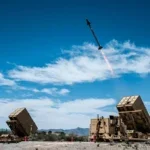
House authorizers are criticizing the Defense Department’s Silicon Valley outreach effort for not tackling what they call “traditional” barriers to entry like a lengthy contracting process and an inability to transition technologies.The House Armed Services Committee (HASC) emerging threats and capabilities subcommittee, in the summary of its mark released Tuesday, supports the effort to increase outreach to, and collaborate with, non-traditional sources of commercial innovation throughout the United States overall. This effort is formally known as Defense Innovation Unit Experimental…













